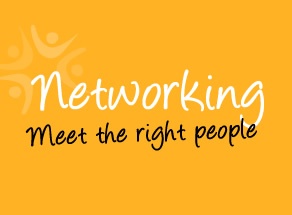
City of Hope Makes the Business Case for Hispanics in Health Care and Expands Its Initiatives for 2015
11/03/2015 04:14PM | 6619 viewsAfter recognizing the growing need for clinical professionals and research staff that more closely mirror the patients it serves in its primary service area, City of Hope took the lead to begin creating and reinforcing talent pipeline strategies for Hispanics in the health care and biomedical industries. With programs and events such as T.E.A.C.H. Project and its Diversity Health Care Career Expo proving highly successful (as featured in a previous article), City of Hope is now expanding upon these initiatives as well as developing additional ones in 2015.
One of these initiatives is the Regional Occupational Program (ROP) in partnership with Duarte High School – which is actually open to any high school student in the San Gabriel Valley. The goal is for 25-30 students accepted into the program to gain exposure to City of Hope’s medical center, business center, and research and sciences departments for six weeks over the summer.
Upon completion of the program, families, friends, teachers and City of Hope mentors are invited to a graduation ceremony where each student gives a presentation to share what they’ve learned about the field of health care and opportunities in the industry they have a particular interest in. (This initiative is in addition to the Science Education Partnership Award (SEPA) Collaborative summer research program held in City of Hope’s community teaching lab for rising 11th and 12th grade students).
Stepping back earlier to grades 3-5, City of Hope will be putting on a full event for “Bring your child to work day” in May. This is a great opportunity for children to see where their parents work and what they do for a living. But more than that, they will be providing hands-on experience and activities with the goal to pique students’ interest in health care and in studying math and the sciences toward potential STEM careers. Toward that end, City of Hope is also looking at creating a Student Leadership Academy and how it might bring its internal program for building leadership skills to the children in their community.
According to Stephanie Neuvirth, Chief Human Resources and Diversity Officer at City of Hope, “The reasoning behind this thinking is that, yes, we need people with science and math skills. But we can’t stop there. As students gain technical depth and know-how, let’s also set them up for future career success by teaching them leadership skills, teamwork and other critical behaviors that will serve them well in a professional working environment.”
The Diversity Health Care Career Expo will once again be held in September, and due to its initial success last year, will be bigger and bolder as it becomes part of City of Hope’s Hispanic Heritage Month celebration. According to Ann Miller, senior director of talent acquisition and workforce development, “We’re reaching out to and taking inquiries from a number of hospitals and other organizations who want to partner with us and have an onsite presence at this year’s expo so they too can start building ongoing relationships with the community.”
Stephanie Neuvirth adds: “Traditional concerns about competing for the same talent must be balanced with a new courageousness to collaborate and work together with external partners to change the conversation – in order to have a bigger impact and evolve the conversation. The same boundaries may no longer make sense when you realize that collaborating with external partners on common goals is the way to move the needle; to build momentum and make it sustainable; and to form the relationships that will help solve for the gaps on a much larger scale – one that can change the world.”
This is a conversation that needs to happen for those internal to organizations, too. At City of Hope – not just recruiters and HR, but clinical workers, scientists, marketers, finance, IT, etc. – are engaged in the dialogue and partner together to help solve for future work needs. Leveraging people from all areas of the business and having that internal synergy will lead to bigger and better outcomes – and it helps to explain some of the early successes City of Hope has seen so far.
Finally, for buy-in and understanding at the executive level, it’s imperative that diversity and workforce pipeline strategies are linked to the corporate strategy and you can show how they can help enable the organization’s mission. Though this may not be easy at first, it’s a vital piece of the puzzle that often gets overlooked. We know there is a talent shortage that’s going to get worse if we don’t act now, and if you can make a business case that ties into the strategic goals of the organization, it becomes a much higher priority.
As you tell the business story, look for others with aligned interests who can help articulate the message. For example, clinicians can explain how important it is to provide culturally sensitive services to patients and their families, people that speak the language and understand the different demographic groups and their attitudes toward doctors and health care in general.
And have a plan. Don’t just talk conceptually about the issues, but know what you’re going to do it about so that when you get buy-in from stakeholders, there’s a plan in place that you can mobilize around and begin to execute immediately. Otherwise, you’ll lose momentum right out of the gate.
An early measure of success will be when you start to see the organization’s leaders driving the conversations that you started having when you anticipated the changes that needed to take place. Until then, City of Hope is heading in the right direction and doing what it can to change the conversation, enlist those in the industry with shared interests, and build momentum and long-term strategies for the future of health care – and the vital role that Hispanics will play in it.






Post your Comment
Please login or sign up to comment
Comments